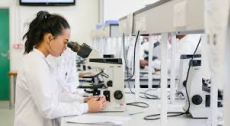

How to write a lab report and evaluate one for Life Science students
Recap: It may seem completely alien at first, at it may be your first time writing a scientific report. But believe me, it gets easier the more and more you practice and with the more papers you read. You may be wondering where you can access published papers and the answer is google scholar. As a Life Science student you will become very familiar with google scholar and you will even start to become more critical of certain papers!
Previously discussed was: reading the title, abstract and introduction.
Now you have read the introduction, read the conclusion. It sounds odd to say, but this can really help with your understanding, if you know the conclusions they have made, this can help with your reading of the results.
As I previously stated, read, highlight and annotate! Maybe even try to summarise the sections you have read in your own words. Next step, put the paper away, walk away, relax or do something else. The next time you read it, you want to start fresh, this way you will 1) have the opportunity to take a break from reading it, and 2) the chance to understand something you did not understand after the first time reading. Now start from the beginning again, the abstract, then the introduction, this can remind you of things you may have forgotten.
Next, read the method, these are usually quite concise and straight to the point, so I would recommend doing some extra research on methods used. This will help you understand not only what they are doing but why they are doing it too. The more experienced you get with reading reports, you can start to question, is this method useful for answering the aim, are there any other methods that could have been used. Would those other methods be more useful?
Next, onto the results. Frustratingly, results can be all over the place, you may be reading about a figure that is on a different page. Unfortunately, that is something you just have to get used to. I would recommend trying to understand the figure as much as you can before reading the written work in the results sections. If the figure is a graph for example, look at the axis, look out for any trends and think ‘what is this graph showing me.’ Question, is the figure clear, does it get the point across? Then read what the results section says, it should match what the figure displays. The results section can be quite long so make sure to jot down what they key results are from each figure.
After, is the discussion, this is where it comes in use to jot down the key results, as the discussion will refer back to the figures used in the results. This makes it easier to read as you can sort of remember what on earth they are talking about!
Image- https://www.essex.ac.uk/subjects/biomedical-science

0 Comment:
Be the first one to comment on this article.